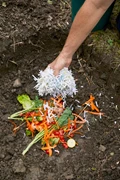
The garden seems to be changing in February. Even though it's still freezing outside, there are signs that spring is just around the corner. The days are finally growing longer as bulbs slowly appear above ground.
The majority of the garden tasks for this month involve getting everything ready for the spring. But if you want to get a head start, there are also certain early sowing and growing tasks to complete. Here’s a list of what to do in your garden in February:
In the flower garden:
Pay attention to your climbers because some may need to be pruned before the month is out (such as group 2 clematis.)
Shrubs like Cornus and salix varieties, which are grown for their vibrant winter stems, should be pruned back to the ground.
After flowering, prune Jasminum nudiflorum to encourage fresh growth and blooms the next year. Trim the growth from the prior year to a distance of 5 cm from the old wood.
Trim winter-flowering heathers as soon as the blooms fade to keep the plants from growing too long.
Once their vibrant exhibition is over, prune winter-flowering shrubs like mahonia.
To prevent winter pansies from setting seed, remove their faded blossoms. When the weather heats up, this will trigger a flush of fresh blossoms.
If you want to transplant snowdrops or grow extra plants, lift and divide those that are still "in the green."
If there are any deciduous trees or shrubs that need to be relocated, do it right away, providing the ground is not frozen or soggy.
Keep an eye out for the hellebore leaf spot, which appears as spherical brown dots on the leaves, and get rid of any infected leaves.
In the Vegetable Garden:
Start chitting early potatoes by standing them on end in an egg box or module tray and putting them somewhere light, cool, and frost-free. Visit our potato hub page, which is filled with gardening and growing advice, for more advice on growing potatoes.
Mulch perennial vegetables like asparagus and artichokes with garden compost or well-rotted manure.
Before the growing season begins, construct raised beds. Raised beds are an excellent approach to cope with clay soils since they allow you to get a head start in the garden and allow the soil to warm up more rapidly.
Remove any weeds from vegetable seed beds and add a lot of compost. In order to keep the prepared soil warmer and drier in advance of spring planting, cover it with sheets of black plastic.
Lime the soils that are acidic.
Continue to exert control over slugs.
To stop the spread of grey mold and downy mildew on brassicas, such as Brussels sprouts, remove any yellowing leaves.
Vegetable plots should be cleaned up, along with any remaining plant debris.
In the fruit garden:
Cut back raspberry canes. Last chance to encourage new canes to bear fruit in the autumn by cutting autumn-fruiting raspberry canes to the ground. Cut the tips of raspberry canes bearing summer fruit that have surpassed the tops of their supports; stop cutting just above a bud. Check out our raspberry pruning guide for more suggestions.
To keep a fruitful framework, prune redcurrants, gooseberries, and blackcurrant bushes.
Apply well-rotted manure or garden compost as a mulch around fruit trees, being careful not to pile it up around the trunk.
While they are still dormant, prune pear and apple trees in the winter. This is your final opportunity to do so. Read our article on trimming apple trees for more suggestions.
Pruning these fruit trees now will render them vulnerable to Silver Leaf disease, so wait until the summer to plant plum, cherry, and apricot plants.
While making sure pollinating insects can still get to the flowers, and protect the apricot, nectarines, and peach blossoms from frost.
For an early crop, force rhubarb plants.
Cloches should be placed over outdoor strawberries to promote an earlier crop. Visit our strawberry hub page to find out more about cultivating your own delicious strawberries.
To fuel plants for the upcoming season, top-dress fruit bushes with a slow-release, potassium-rich fertilizer.
Fruit that is rotting should be removed from shelves.











